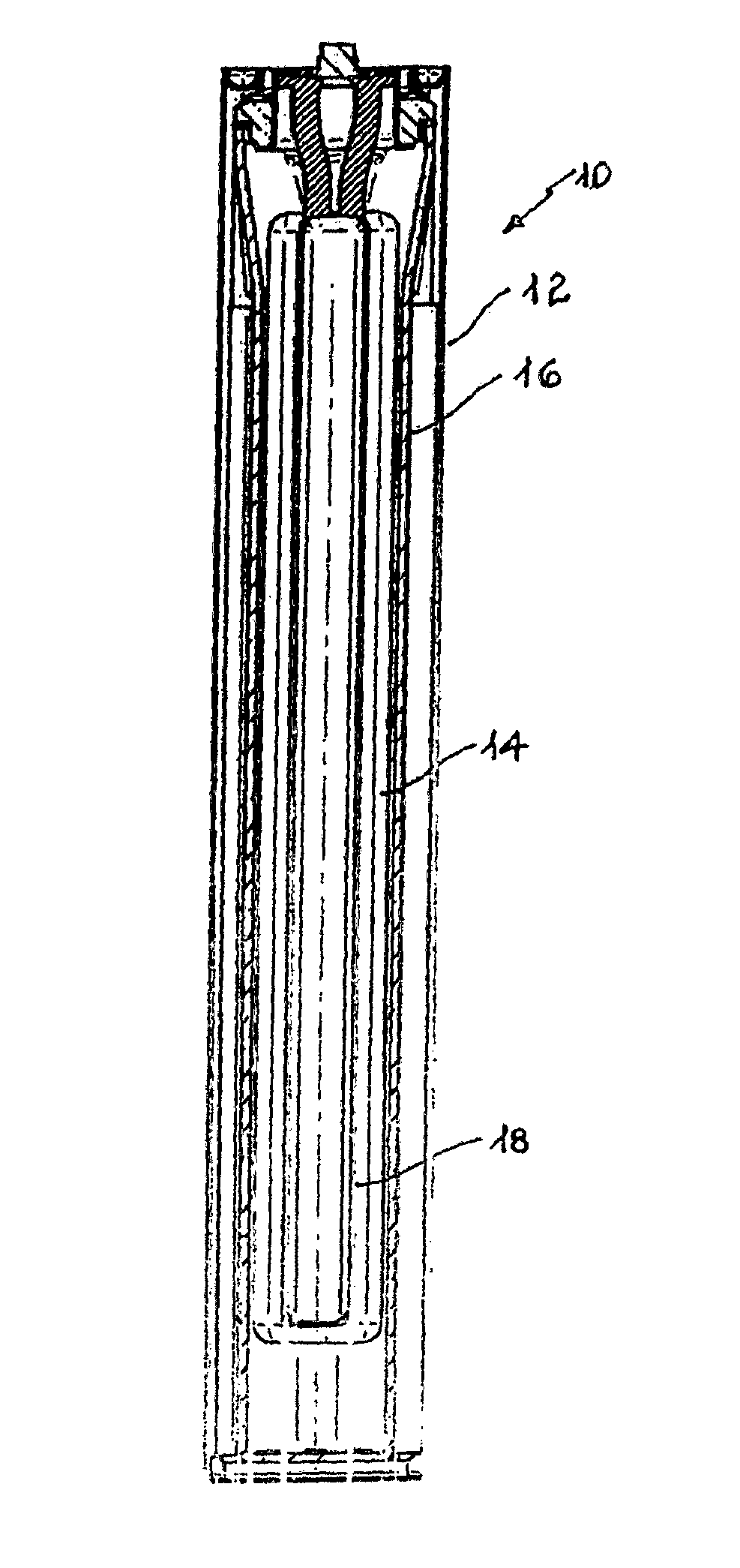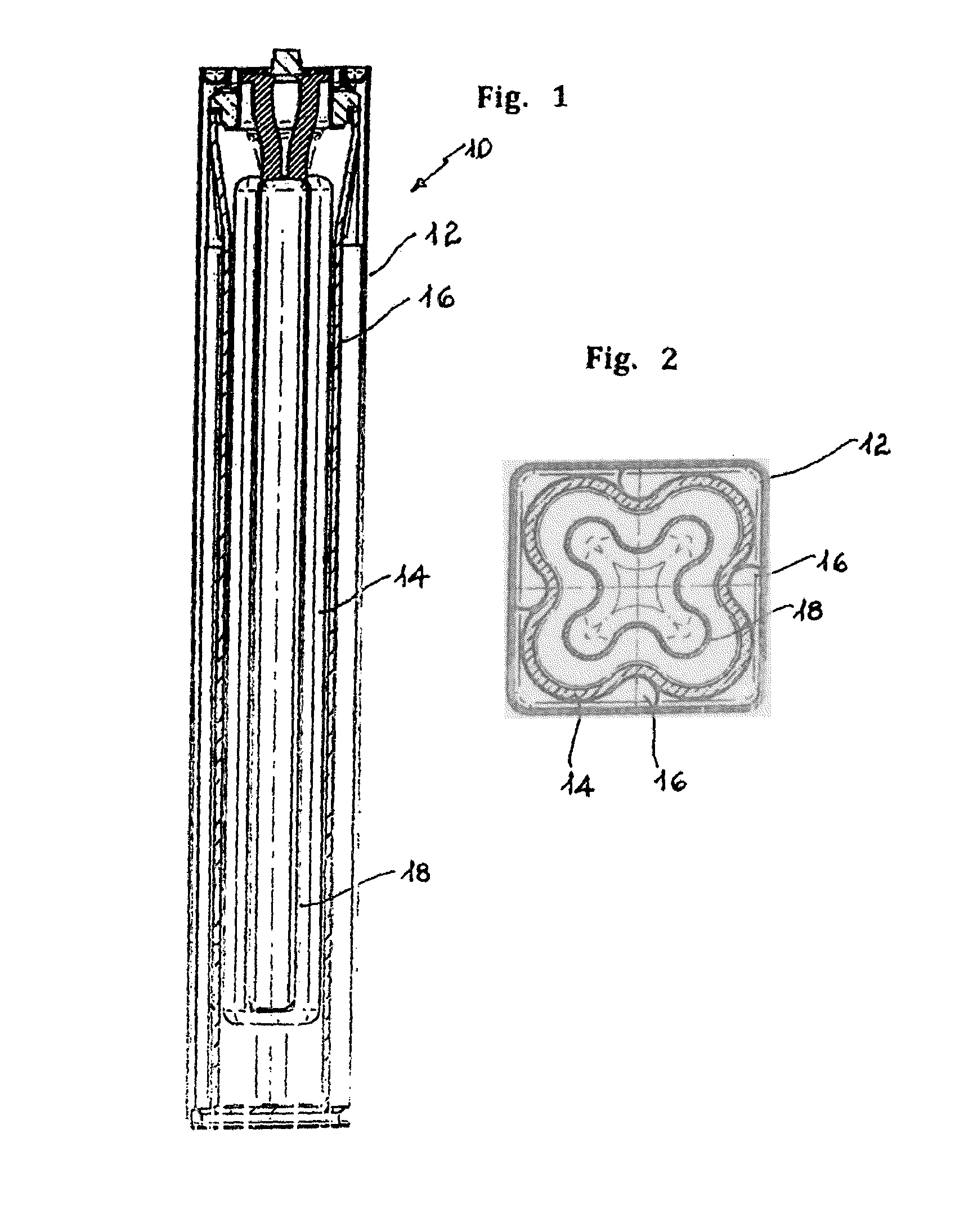High-efficiency, high-temperature, sodium-based electrochemical cell
a sodium-based electrochemical cell, high-efficiency technology, applied in the direction of electrode carriers/collectors, electrical apparatus, electrochemical generators, etc., can solve the problems of affecting the overall efficiency of the cell, reducing the temperature unevenly, affecting the life, etc., to avoid dangerous thermal imbalances, avoid the dispersion of heat generated, and increase the lifespan of the battery
- Summary
- Abstract
- Description
- Claims
- Application Information
AI Technical Summary
Benefits of technology
Problems solved by technology
Method used
Image
Examples
Embodiment Construction
[0026]With initial reference to FIGS. 1 and 2, the high-efficiency, high-temperature, sodium-based electrochemical cell for batteries of the present invention, indicated as a whole with reference numeral 10 in FIG. 1, comprises a watertight containment body or outer casing 12, typically elongated parallelepiped in shape, obtained from a steel strip coated with nickel bent and welded. In casing 12 there is inserted a ceramic electrolyte 14 tubular in shape, consisting of β-alumina; according to the exemplary embodiment in FIGS. 1-4, said ceramic electrolyte 14 by way of example defines a four-lobed or cloverleaf section body, in which concave and convex mutually homogeneously alternating develop for most of the longitudinal extension of the body itself. In other known embodiments, the body constituting the ceramic electrolyte 14 defines different configurations, for example having a circular, three-lobed or other cross-section.
[0027]Between casing 12 and the ceramic electrolyte 14 th...
PUM
 Login to View More
Login to View More Abstract
Description
Claims
Application Information
 Login to View More
Login to View More - R&D
- Intellectual Property
- Life Sciences
- Materials
- Tech Scout
- Unparalleled Data Quality
- Higher Quality Content
- 60% Fewer Hallucinations
Browse by: Latest US Patents, China's latest patents, Technical Efficacy Thesaurus, Application Domain, Technology Topic, Popular Technical Reports.
© 2025 PatSnap. All rights reserved.Legal|Privacy policy|Modern Slavery Act Transparency Statement|Sitemap|About US| Contact US: help@patsnap.com



